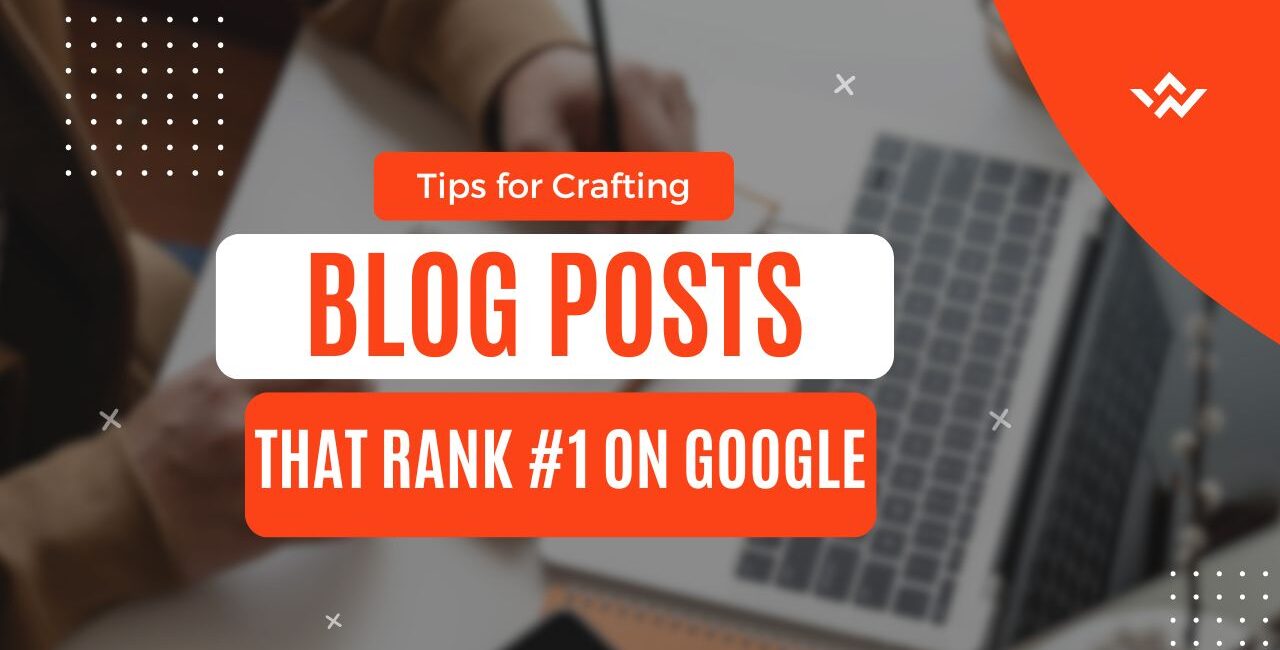Ranking #1 on Google is the holy grail for many bloggers and website owners, and for a good reason – it brings in the most traffic and visibility. Let’s share actionable tips to help you optimise your blog posts for that coveted top spot on Google’s search engine results page (SERP).
Conduct Thorough Keyword Research
The first step in creating a blog post that ranks #1 on Google is conducting thorough keyword research. Targeting the right keywords is crucial for attracting the right audience to your content. Utilize keyword search tools, such as Google Keyword Planner, SEMrush, or Ahrefs to find relevant keywords with high search volumes and low competition. Additionally, don’t overlook the power of long-tail keywords, which can help you target more specific search queries and capture highly engaged traffic.
Focus on High-Quality Content
Once you’ve recognized your target keywords, it’s time to focus on creating high-quality content that provides real value to your readers. Google’s algorithms prioritise content that is comprehensive, engaging, and informative, therefore, aim to create blog posts that go above and beyond in addressing the needs and interests of your audience. Incorporate multimedia elements such as images, videos, and infographics to enhance the visual appeal and depth of your content. If you’re in doubt about your abilities to do this, the best thing to do is outsource to an SEO company in London.
Optimise On-Page SEO Elements
Optimising your on-page SEO elements is essential for signaling to Google what your content is about and improving its chances of ranking #1. Start by optimising the title tags for your content and adjusting meta descriptions to comprise your target keywords and influence users to click through to the content. Use heading tags (H1, H2, etc.) strategically to structure your content and make it easier for both users and search engines to understand.
Enhance User Experience
User experience plays a significant role in SEO, so it’s essential to prioritise the usability and accessibility of your website. Ensure that your blog is mobile-friendly and loads quickly on all devices, as Google considers mobile-friendliness a crucial ranking factor. Make your content easy to read and navigate by using short paragraphs, bullet points, and descriptive subheadings. A positive user experience not only improves your chances of ranking #1 but also keeps visitors coming back for more.
Leverage Internal and External Links
Both internal and external links are important for SEO and can help improve your blog post’s chances of ranking #1 on Google. Internally linking to other relevant pages on your website helps search engines understand the structure and hierarchy of your content, while external links from reputable websites signal to Google that your content is trustworthy and authoritative. Be sure to avoid link schemes and low-quality links, as these can have a negative impact on your SEO efforts.
Encourage Reader Engagement
Engaging with your readers is key to building a loyal audience and improving your blog’s SEO performance. Include compelling calls-to-action (CTAs) throughout your blog posts to inspire readers to leave their comments on your post, share their views, or take other desired actions. Respond to comments promptly and engage with your audience on social media to foster a sense of community and connection.
Should You Use AI to Create Blog Posts?
Most business owners are aware they need to keep an active blog. Not only does this provide a wealth of information to customers, but it’s also imperative for SEO strategies. This is your opportunity to use keywords, build links, and increase visibility on your site.
However, there’s one problem. Creating blog posts is time-consuming. You’ve got the process of researching and writing, as well as optimising and adding images. It all takes time, and creating several posts a week can dominate your working time. Some business owners are starting to utilise AI and using systems like ChatGPT for their blog posts. Is this a good idea? Let’s take a closer look.
The Benefits of AI
AI is all about saving time, energy, and money. Indeed, it can be a valuable tool when you’re creating blog posts. For example, you can use ChatGPT for generating ideas. You gain feedback on popular topics and those that customers want to know about. What’s more, it can give you inspiration for further topics you want to cover when you’re lacking ideas.
Additionally, many people use ChatGPT to speed up research. It can be great for summarising information from the internet, saving you from going through various websites manually. Indeed, you can use all of this information to create a factual and insightful blog post.
Reasons to Be Cautious
As great as AI can be for ideas and research, you shouldn’t depend on systems like ChatGPT to write the content for you. While it can give you basic outlines and something to work with, there’s the possibility that a blog post can be robotic and boring to read. What’s more, you have to remember Google’s rules. You’re supposed to be creating content that’s helpful to customers and will be unique.
Therefore, using AI to generate ideas and prepare your content is a good idea. It can still save you time and allow you to work more efficiently when you have several posts to create. However, you should not depend on this system to write your whole blog post. This is when things can go wrong, whether it’s creating boring content or going against Google, and your website gets punished.
Conclusion
Ranking #1 on Google requires a strategic approach and a commitment to creating high-quality, user-focused content. By following the tips outlined in this article, you can improve your blog’s chances of reaching the top spot on Google’s search results page and attracting more organic traffic to your website. Remember to conduct thorough keyword research, focus on creating valuable content, optimise your on-page SEO elements, and engage with your audience to build a successful blog that ranks #1 on Google.




